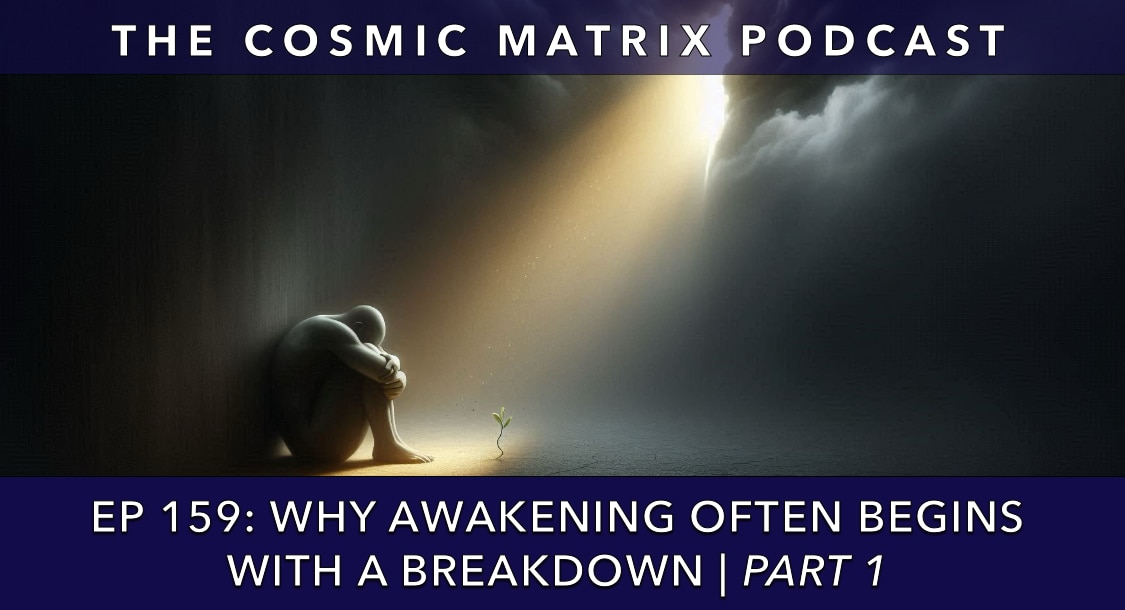Podcast: Play in new window | Download (Duration: 51:40 — 35.5MB) | Embed
Subscribe: Apple Podcasts | Spotify | Android | RSS | More
What if your anxiety, depression, inner struggle, and emotional intensity weren’t signs of trauma or “mental illness”, but signs that your soul is trying to evolve?
In this podcast, we explore the powerful and underappreciated work of Polish psychologist Kazimierz Dabrowski and his Theory of Positive Disintegration (TPD)—a developmental framework that redefines mental health, reframes suffering, and reveals the hidden path toward authentic individuality.
Rather than viewing psychological distress as pathology, Dabrowski saw it as a necessary breakdown of the false self—an initiation into a higher level of being.
His model describes five levels of human development, from mechanical conformity to the embodiment of a consciously chosen, fully integrated Self.
Through the lens of TPD, we’ll explore:
-
- Why most people never “wake up” from collective programming
- Why awakening is impossible without breakdown, disillusionment, and disintegration.
- What drives spiritual and moral evolution
- How disintegration leads to reintegration at a higher level
- Why suffering, inner conflict, and even neurosis can be signs of higher potential
- The difference between giftedness and true developmental potential
- How this model intersects with esoteric teachings, shadow work, and the evolution of consciousness
- What is necessary to evolve to higher levels of integration, and what are the pitfalls and dangers of regression to a lower level
Whether you’re navigating a dark night of the soul or sensing the pull toward a higher version of yourself, this episode offers a deeply validating and empowering map for the inner journey.
In part 1, we introduce Dabrowski’s Theory of Positive Disintegration, exploring how inner conflict, emotional intensity, and psychological breakdown can be signs of growth, not mental illness. We break down the Five Levels of Development, the Three Factors that shape our evolution, and redefine “personality” as a conscious, moral ideal. We also begin drawing parallels between Dabrowski’s model and ancient esoteric teachings on soul evolution and levels of consciousness.
In part 2, we go deeper into Levels II through V, mapping the stages of breakdown, awakening, and conscious transformation. We explore how each level reflects a distinct shift in consciousness and inner alignment, and compare this progression to esoteric teachings on the soul’s journey, initiation, and individuation. From the first stirrings of conscience to the embodiment of the higher self, we trace the path of vertical development and the inner fire required to walk it.
Show Notes Part 1:
- How emotional intensity, anxiety, and existential crisis may be signs of inner growth—not mental illness.
- Why psychological disintegration is a necessary and meaningful step in authentic personality development.
- Growth is self-directed and requires conscious inner work, reflection, and vertical discernment.
- What Dabrowski really meant by “personality” and how it differs from ego or social identity.
- The Five Levels of Development, from mechanical conformity to fully autonomous, integrated individuality.
- Why the vast majority of people remain stuck at Level I, operating from mechanical, biological drives, and social conditioning.
- What happens at Level II when existential questions arise, but there’s no clear value system to navigate them.
- The breakthrough of Level III: the emergence of vertical awareness and the internal sense of “higher vs. lower.”
- The Three Factors that influence development—and why the Third Factor is essential for conscious evolution.
- What Developmental Potential really means, and how overexcitability and giftedness play a role (and a risk).
- Why giftedness without depth or ethics can become dangerous, and how one-sided development leads to distortion.
The hidden danger of Level I: how “well-adjusted” individuals can unconsciously serve destructive systems and why awakening is impossible without breakdown, disillusionment, and disintegration.
In Part 2 (only for members), we go deeper into:
- The breakdown of false consensus at Level II occurs when the mechanical life no longer satisfies, but a higher meaning is still out of reach.
- How disillusionment, existential tension, and inner conflict initiate the awakening process, but can also lead to collapse or regression.
- What’s required to move from Level I to II, including sensitivity, crisis, and the loosening of instinctual and social conditioning.
- The emergence of vertical consciousness at Level III—the moment the individual sees the difference between lower impulses and higher truth.
- How Level III marks the birth of real conscience, inner hierarchy, and the beginning of the Third Factor.
- Why Level III is spiritually pivotal but psychologically unstable, and how inner suffering becomes the fuel for transformation.
- The role of solitude, imagination, and glimpses of the ideal self in navigating Level III without falling into spiritual ego or nihilism.
- Level IV as the path of conscious transformation, where the inner work becomes structured, moral discipline is cultivated, and higher values are embodied.
- The importance of building a personal value hierarchy and committing to integrity, even in the face of misunderstanding or rejection.
- Esoteric parallels with initiation, alchemy, and the “second birth”, where the soul begins to direct the personality from within.
- The qualities of Level V: moral courage, integration, humility, and vision, where the individual lives as their values and serves through who they are.
- Why Level V is rare but attainable and why it demands the full sacrifice of ego, the integration of shadow, and a life lived in service to something higher.
Go HERE to listen to Part 2 if you’re a member or REGISTER to become a member to have access to the membership section (including the membership forum.)







